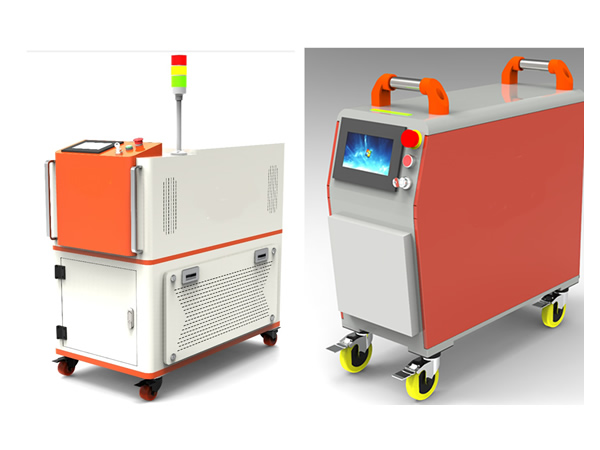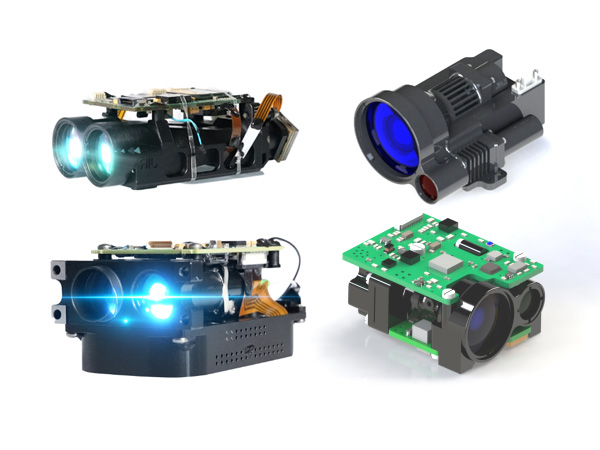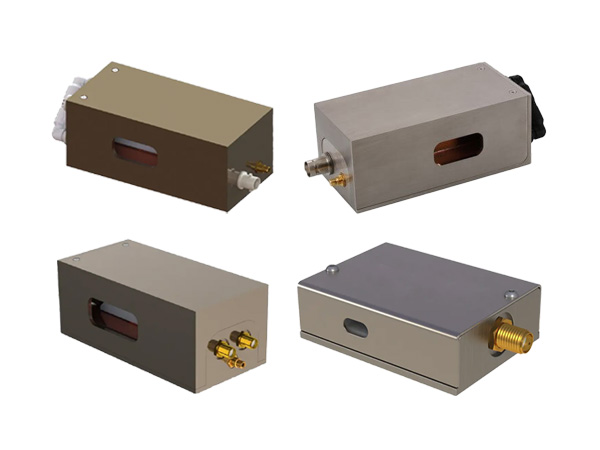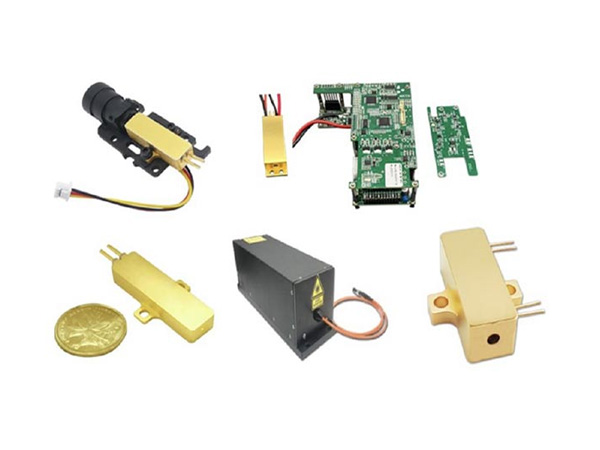Lamp Lifetime
Lamp lifetime, also known as ageing, is a complex subject. It is closely related both to the lamp’s application and the environment in which it is used. Further, pulse lamps and continuous arc lamps are not generally operated under standardised conditions, hence manufacturers cannot give specific time values for lamp life. Instead, pulse lamp lifetime is normally measured in terms of the total number of shots or flashes achieved to the point where the useful light output drops to some arbitrary intensity. Having said this, continuous arc lamps usually have their lifetime measured in the total number of hours of operation, as the shot value obviously cannot be calculated.
The definition of ‘end of life’ will vary from customer to customer. Take for example a continuous arc lamp operating in a system where the application requires maximum laser output power. The lamp may need to be removed after 400 hours if no further adjustment in lamp input power is available and the laser output power required for the application can no longer be achieved. But the same lamp could be installed into a second system where the application requires an entirely different set of parameters and the final lifetime figure would be completely different.
Design aspects of the pump chamber - such as degree of close coupling, coolant flow rates, coolant velocities etc - may also vary between systems, which could enable the lamp to perform satisfactorily for a much longer period.
Failure mechanisms
Generally speaking there are four major reasons for lamp failure.
1 Electrode erosion, which leads to deposition of material on the inside wall of the envelope, and in turn to a reduction in the useful light output from the plasma.
2 Contamination of the fill gas leads to misfiring, ignition failure or simmer difficulty.
3 Cracked glass to metal seals
4 Explosion, due to ablation, devitrification or cracking of the quartz envelope.
Electrode erosion
Electrode erosion in pulse lamps predominantly occurs at the cathode, particularly under conditions where the charge transfer per pulse is high. In this situation, the cathode tip is subjected to severe thermal stresses. The effect of this constant thermal cycling causes the surface of the cathode to fracture and eventually, relatively large metallic particles will detach from the cathode and be ejected into the arc region.
Erosion of this nature will result in a reduction in light output and, potentially, failure of the quartz envelope. The majority of modern day pulse lamps and continuous arc lamps contain dispenser cathodes. These cathodes are impregnated with low work function Barium-based compounds, designed to promote efficient emission of electrons during lamp operation. Due to the alkaline nature of these compounds however, a chemical reaction occurs with the quartz glass in the arc region at elevated temperatures. Devitrification of the quartz and cracks in the internal surface of the tube will ensue, eventually leading to breakage of the quartz envelope. Our lamps have been specifically developed to minimise this effect for high charge transfer operating conditions.
In a well-designed cavity and pulse lamp arrangement, deterioration of the anode is seldom a problem, providing the design allows for adequate cooling and the operating parameters do not deliver excessive peak or average powers to the anode. In continous arc lamps however, the power loading at the anode is considerably higher than in pulse lamps. This means much higher temperatures are achieved and thus the sputtering or evaporation process from the anode is accelerated. The high gas fill pressure associated with these types of lamps does have an inhibiting effect on the build up of deposits, restricting them to a region in close proximity to the electrode. Electrode deterioration can be controlled to some degree by the lamp manufacturers through careful selection of raw materials and advanced processing techniques.
When designing new systems, it is important that Design Engineers consult the lamp manufacturer at an early stage to ensure that the lamp is optimised for the system and the application.
Cathode erosion in continuous arc lamps normally occurs at a very low rate over many hundreds of hours. To guarantee this, thermal cycling of the cathode tip should be kept to an absolute minimum, current ripple should not exceed 1-2% and the lamp should be re-ignited as seldom as possible. We have developed cathodes especially suited to this mode of operation.
Gas fill contamination
Contamination of the fill gas in pulse lamps is usually attributed to Oxygen released from the quartz (SiO2) envelope. The process occurs when excessively high peak currents discharged through the lamp give rise to high instantaneous temperatures at the inner surface wall of the envelope. This leads to a reduction of the SiO2 into Silicon and Oxygen. The electronegative nature of the Oxygen inhibits the electron flow and effectively raises the breakdown voltage of the lamp. This can have an effect on the ignition, triggering reliability and the simmering characteristic of the lamp. Devitrification and an exceeding of the recommended average power ratings of lamps will also lead to Oxygen generation from the quartz envelope, as will any process which results in thermal overload of the quartz glass. Manufacturers’ recommended lamp ratings should be adhered to at all times to ensure reliable operation.
Glass to metal seal failure
Failure of the seal is generally a very rare occurrence. It is usually caused either by a manufacturing fault or by a poorly designed mounting arrangement. Lamp mounting must incorporate a degree of flexibility to enable the lamp to expand or contract due to thermal movement and also to absorb vibration. Large acoustic shock waves are generated in pulse lamps during the current discharge. As the rapidly expanding plasma channel forces gas out of the arc region into the dead volume seal area, the lamp seal could crack if the lamp is mounted too rigidly. The temperature of the seal should also not exceed 200°C for extended periods, otherwise the Tungsten lead through wire will oxidise and eventually cause the seal to fail. The glass to metal seal will withstand temperatures up to 600°C but only for limited periods of time.
Envelope ageing
Deterioration of the quartz envelope is a complex issue and, as previously mentioned, can be influenced by sputtered electrode deposits and their interaction with the hot plasma. There are however, thermal and pressure related mechanisms, independent of electrode deposits, which have an ageing effect on the envelope. In pulse lamps stresses build up in the envelope wall following each discharge. These high instantaneous temperatures give rise to progressive vaporisation, devitrification and thermal cycling which will ultimately lead to fracture of the envelope. At very high pulse energies, the internal pressure wave can be forceful enough to overcome the mechanical strength of the envelope. Pulse lamp explosion would then occur.
Lifetime calculations
For lamps operated with a pulse power supply, the preferred method for determining the life time of a pulse lamp is to show the pulse energy (E0) in terms of the corresponding explosion energy (EX) at a specific pulse duration. Note that the explosion energy is the energy required to fracture the envelope in a single shot. This figure can be calculated from the following formula:
Ex=Kext1/2
Kex is the explosion energy constant (Ws ) and can be found in all our data sheets and lamp reference tables. In the case of a pulse forming network t is the time constant of the circuit in seconds:
t = (LC)
C is the capacitance in Farads and L is the inductance in Henries.
Once E0 is known and EX has been calculated for a specific pulse duration, lamp life can be predicted with reasonable accuracy by using the following formula:
Lifetime=(E0/Ex)-8.5
Due to trapped radiation, derating may be necessary when lamps are used in conditions of tight optical coupling e.g. laser cavities. Typically 10 - 30% reductions are required. In correctly designed systems, lifetimes greater than 108 pulses are attainable under low loading conditions. When the bore current exceeds about 7500 Acm-2, erosion of the wall becomes important. The exact calculation of this effect is not possible as it is often influenced by the details of a trigger system.
Being aware of these potential life limiting factors emphasises the economical and technical advantages of obtaining lamps from a widely experienced producer. Our objective is to optimise the performance of lamps, and to avoid or reduce these life determining effects in relation to the various constituent parts of the lamp and to the application.
 English
English Français
Français Deutsch
Deutsch euskara
euskara Русский язык
Русский язык Italiano
Italiano Português
Português Nederlands
Nederlands Polski
Polski Greek
Greek Lietuva
Lietuva Türkçe
Türkçe 日本語
日本語 한어
한어 中文
中文 தாமில்
தாமில் فارسی
فارسی हिंदी
हिंदी Tiếng Việt
Tiếng Việt ภาษาไทย
ภาษาไทย Pilipino
Pilipino Indonesia
Indonesia தாமில்
தாமில்





